This post may contain affiliate links. Please read my disclosure policy for details. As an Amazon Associate, I earn from qualifying purchases.
Tamago Kake Gohan is one of Japan’s most popular comfort foods for breakfast. Simply crack a raw egg over a steaming bowl of hot rice, top it with soy sauce, and enjoy the textural delight that will tantalize your taste buds.
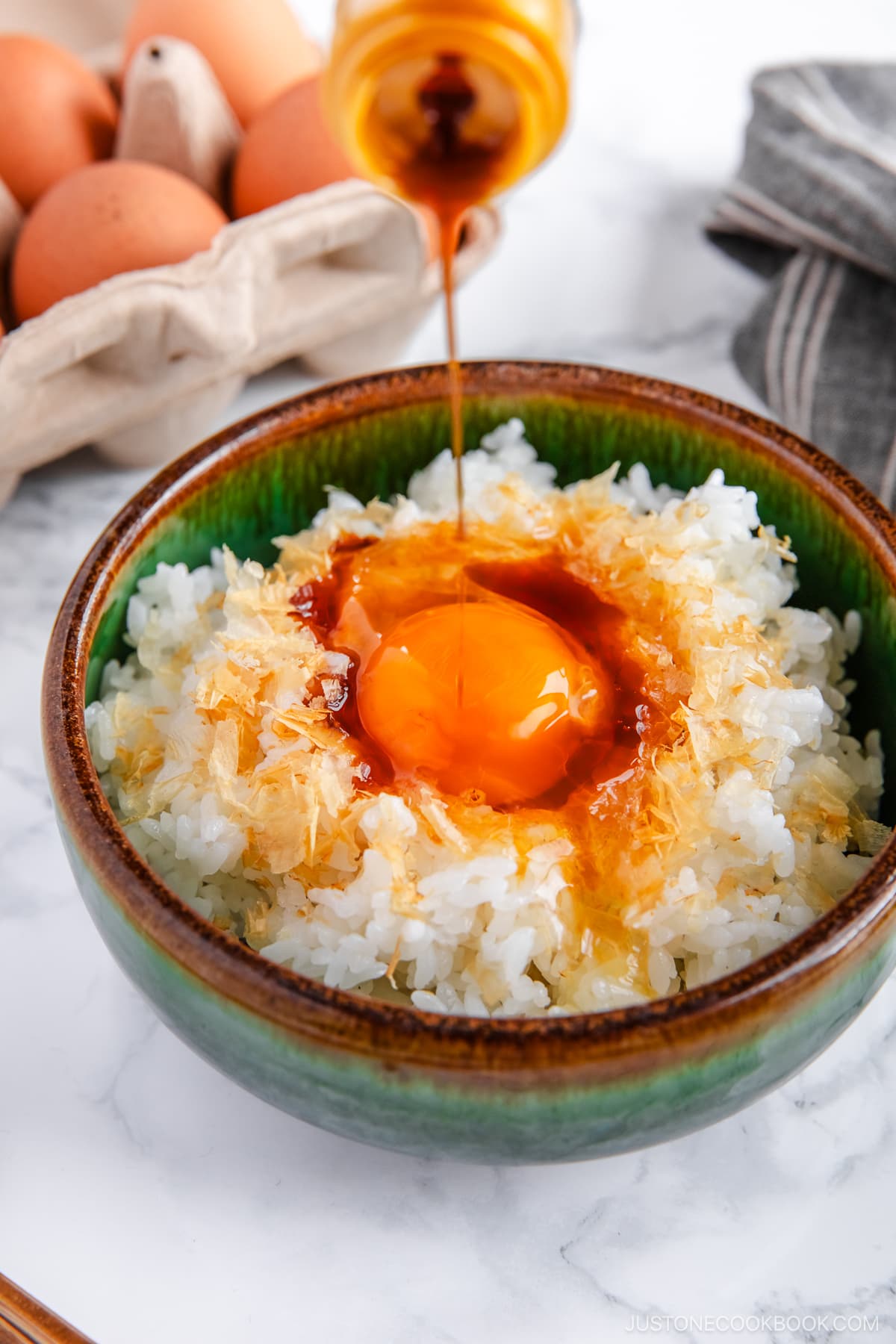
Say hello to a hearty, nutrient-dense breakfast that will power up your mornings: Tamago Kake Gohan, or egg over rice. Here we have a warm bowl of fresh cooked rice folded in with velvety egg until creamy and airy, then drizzled with a splash of umami soy sauce.
This is an easy breakfast that’s as satisfying as it is tasty. It happens to be one of my favorite ways to start the day, as it reminds me of Japan when I’m feeling a little homesick.
What is Tamago Kake Gohan?
Tamago Kake Gohan, also abbreviated to TKG (卵かけご飯), is a classic Japanese comfort food made with just three ingredients: rice, raw egg, and soy sauce. A bowl of rice is topped with a raw egg and a generous sprinkling of soy sauce. Everything is mixed so air is incorporated, and the egg proteins stretch, making it all a cohesive mixture. It has a texture similar to a risotto that’s rich, salty, and slightly sweet.
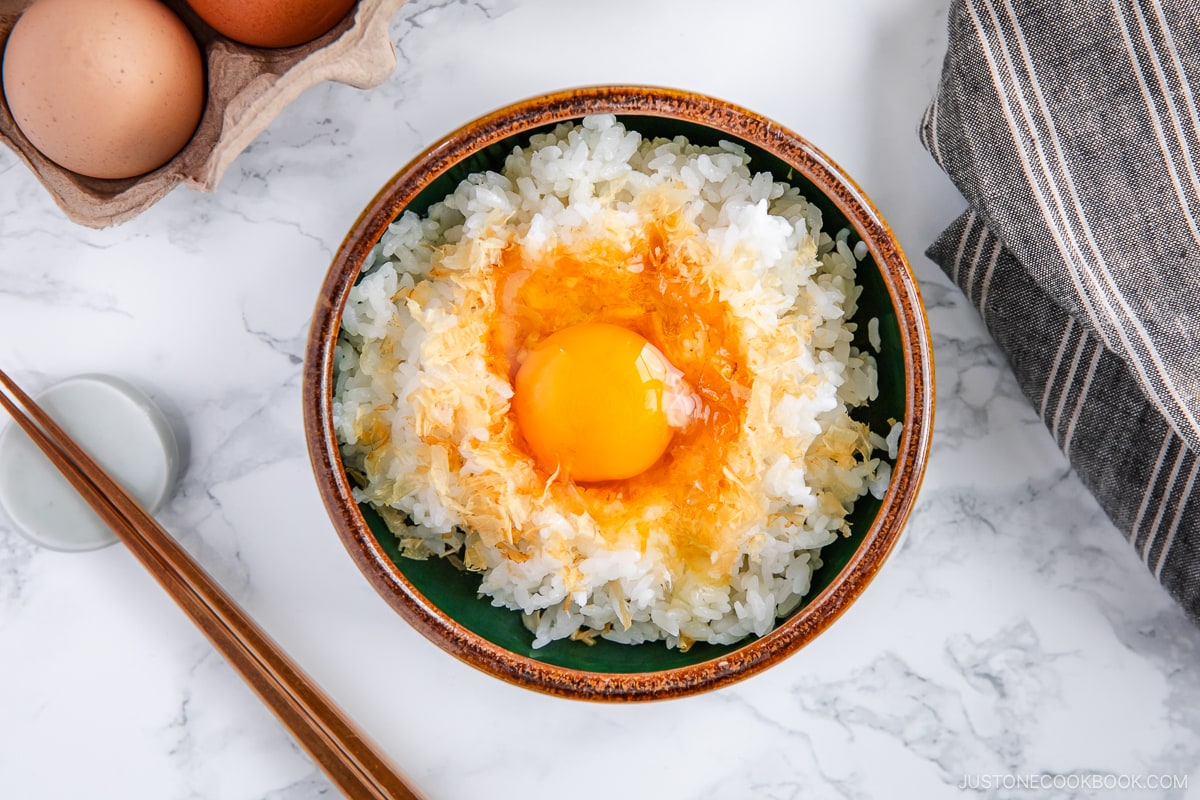
We typically eat tamago kake gohan for breakfast as it provides everything the body needs to start the day. Since it’s quick to assemble, it’s a perfect food to make for busy mornings!
The famed dish’s birthplace is said to be Misaki-cho, Okayama Prefecture. Journalist Ginko Kishida is credited with being the first person to eat egg-cooked rice in Japan and popularize it. Nowadays, Misaki-cho is considered a sacred place for Tamago Kake Gohan, with about 70,000 people visiting every year in search of the perfect combination of flavors.
Fun fact: Did you know that October 30th is known as Tamago Kake Gohan Day? The 1st Japan Tamago Kake Gohan Symposium was held in Shimane Prefecture from October 29th to 30th, 2005, and has become an annual event.
Is It Safe to Eat Raw Eggs?
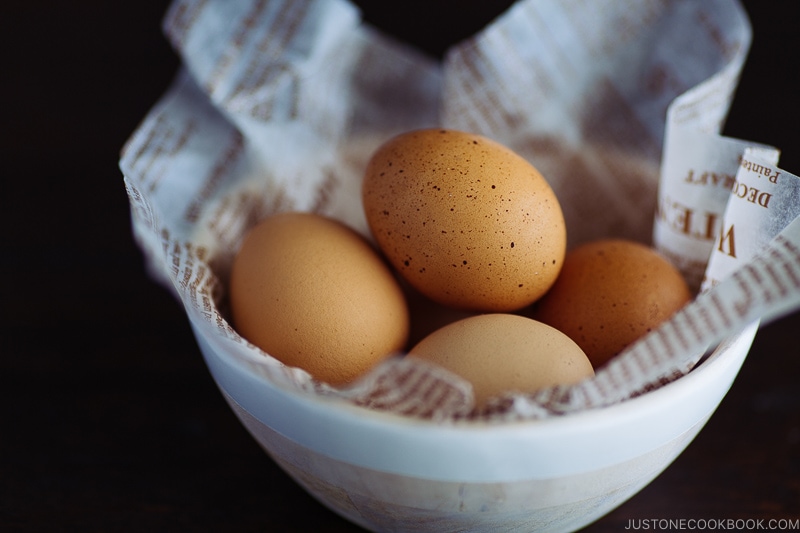
In Japan, it’s common for people to eat raw eggs in dishes such as sukiyaki, gyudon, and TKG. This is thanks to the extensive guidelines for farms and supply chain workers on the proper handling of eggs. One of those guidelines requires in-shell heat sterilization for any eggs intended to be eaten raw. Advanced machines check the inside of the egg to ensure that bloodspots are not present, clean them without breaking their shells, dry them, and package them safely for human consumption.
Not every country follows the same guidelines, so it may be unsafe to eat raw eggs in your country. I recommend buying free-range eggs from local farms or markets, and if possible, ask the supplier if they are safe to eat raw.
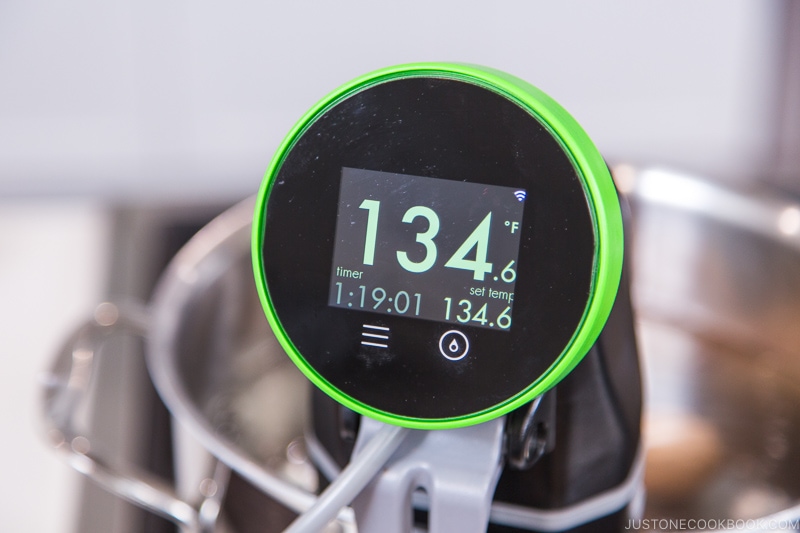
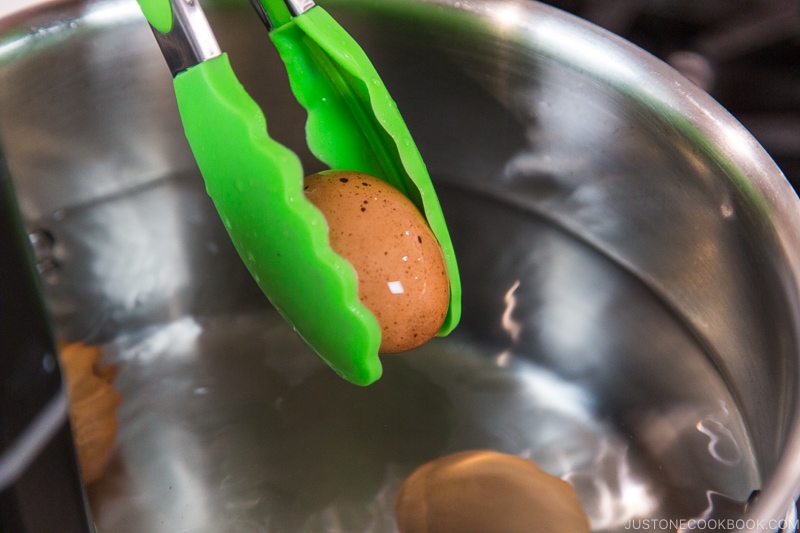
If you are still uncertain, I recommend eating pasteurized eggs. These are eggs that have been heated in warm water baths to kill any bacteria that might be present. You can get my recipe here.
Why You’ll Love This Recipe
- So simple and easy to make! If you have steamed rice, it takes just a few minutes to prepare.
- It’s a flavor and texture sensation.
- A great alternative to a plain bowl of rice.
- Packed with protein and nutrients, perfect for energizing you throughout the day.
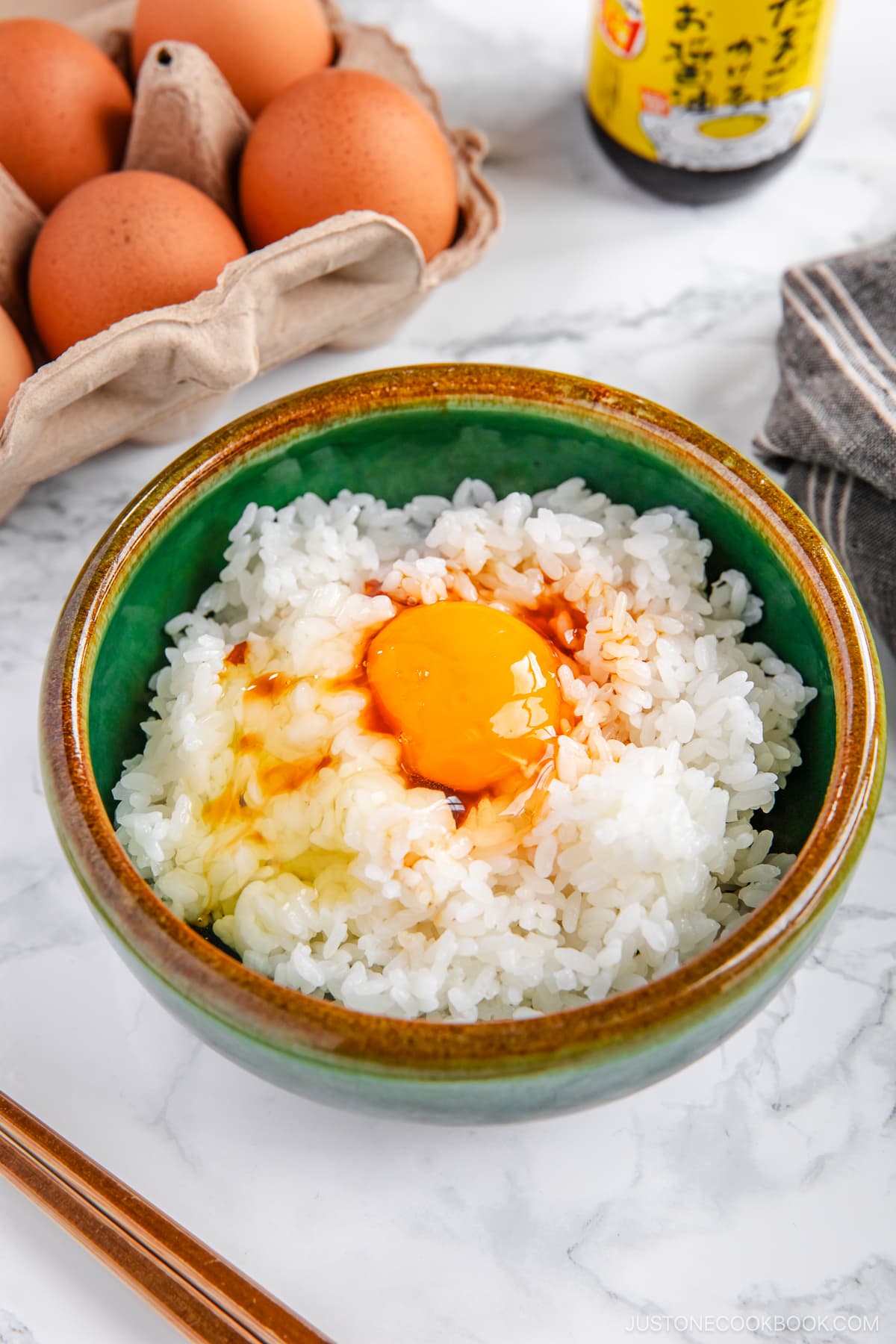
Ingredients for Tamago Kake Gohan
- Steamed rice – Use Japanese short-grain rice for this recipe!
- Egg
- Soy sauce – If you like, you can also get this special soy sauce for TKG (sold on Amazon).
You will probably have all of these ingredients in your fridge or pantry, so you can make it whenever you like!
How to Make the Best Tamago Kake Gohan
- As there are only three necessary ingredients, make sure to use the highest quality available. A good quality soy sauce also goes a long way!
- Take extra care when making your rice, as it will determine the texture of your TKG. Check out our guide on how to make rice in a rice cooker or on the stove.
- For the best texture and taste, use freshly steamed hot rice. This will help slightly thicken the egg, giving it a lighter and fluffier texture.
- Use high-quality, free-range eggs. These are less likely to have defects, often have a deeper yellow/orange color, are richer in flavor, and generally taste nicer. Not to mention, they are more nutritious.
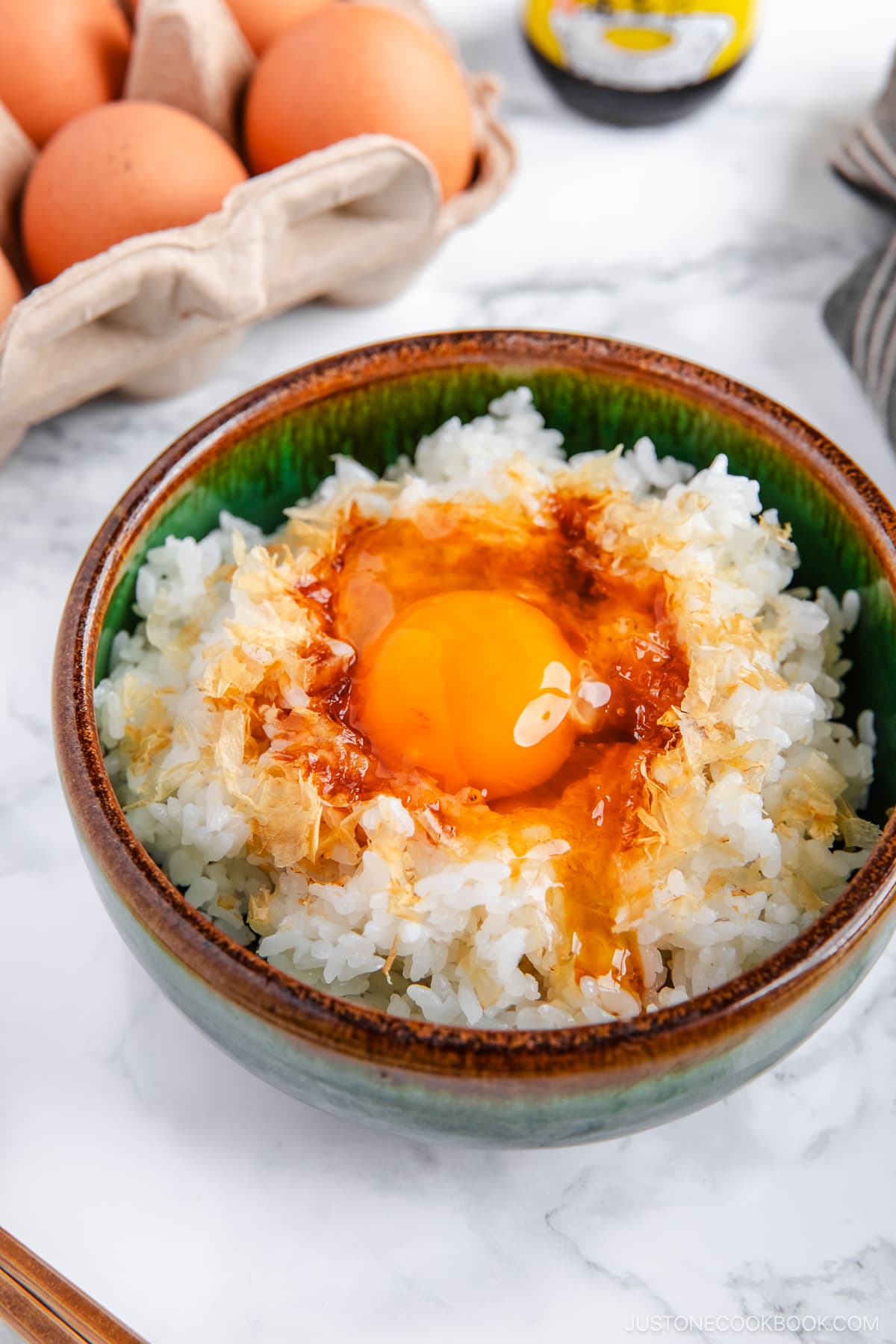
Substitution Tips and Variations
- If you do not want to eat raw eggs, try substituting with an onsen tamago. You can still enjoy the classic flavors of TKG!
- Once you’ve had the classic TKG, try adding different toppings such as katsuobushi (dried bonito flakes), nori (dried seaweed), or furikake for an extra umami hit!
- You can also add natto (fermented soybeans), making another variation called Natto Tamago Kake Gohan.
Recipe Tips and Techniques
- Stir the ingredients with a pair of chopsticks until the egg is fully incorporated and turns pale yellow.
- Add a little soy sauce to balance the egg’s richness, the rice’s sweetness, and the soy sauce’s saltiness. There’s nothing worse than a TKG that tastes of soy sauce. Remember, you can always add, but you can’t take away!
- You can also use reheated leftover rice, making it a quick and easy breakfast!
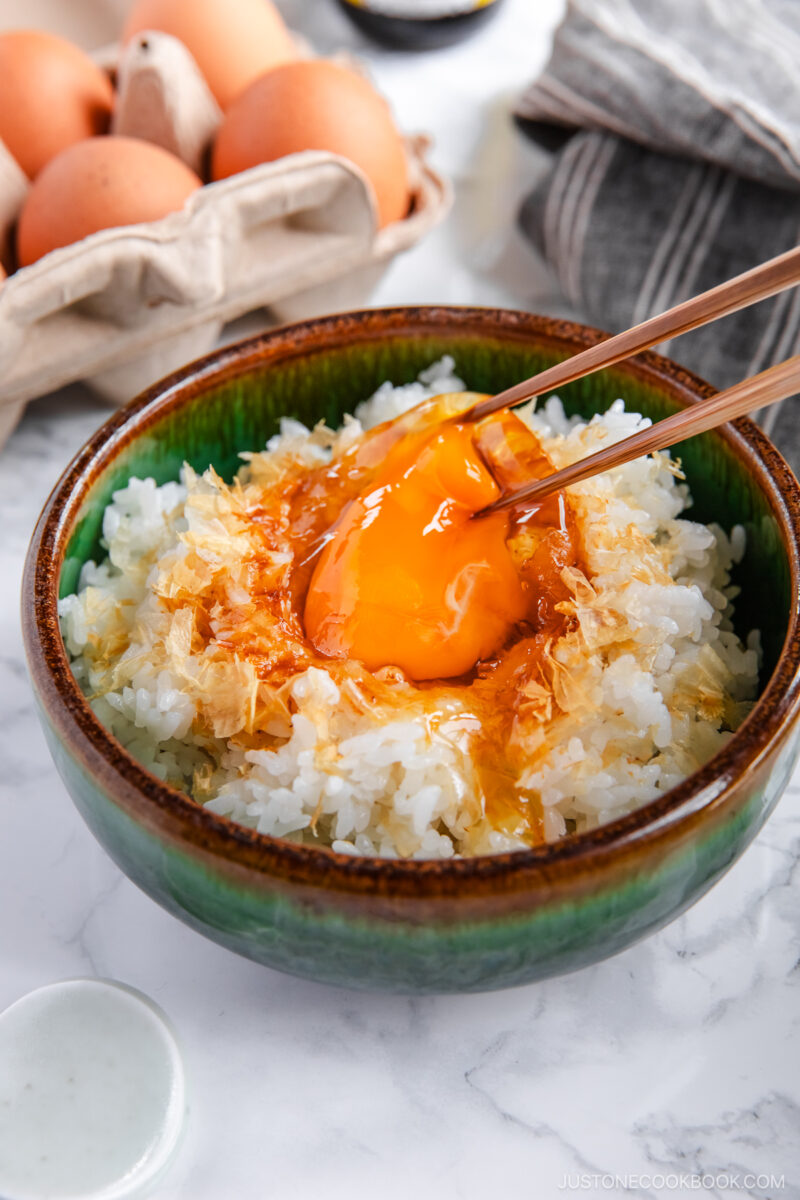
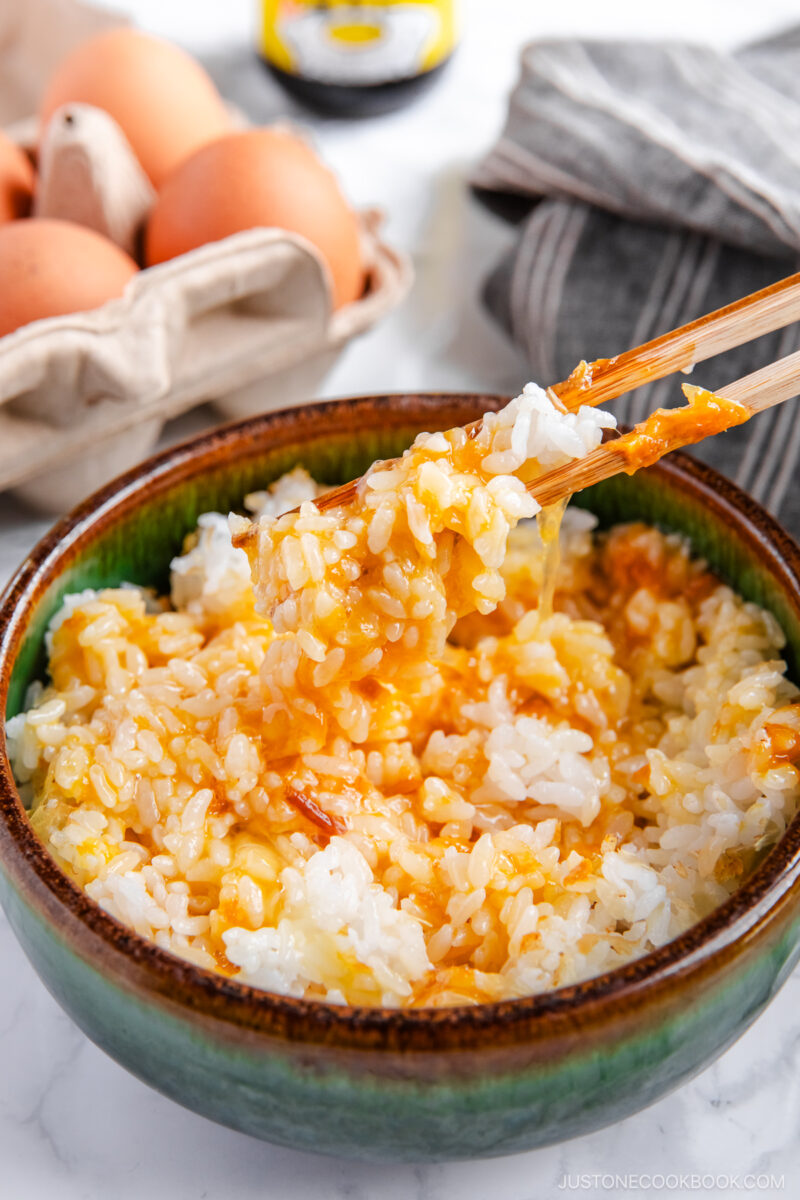
Freeze Rice and Reheat for a Quick Breakfast
While freshly cooked rice is best, you can speed things up by freezing it in advance and reheating it to make TKG whenever you like! Read my tips on the best method of storing the rice.
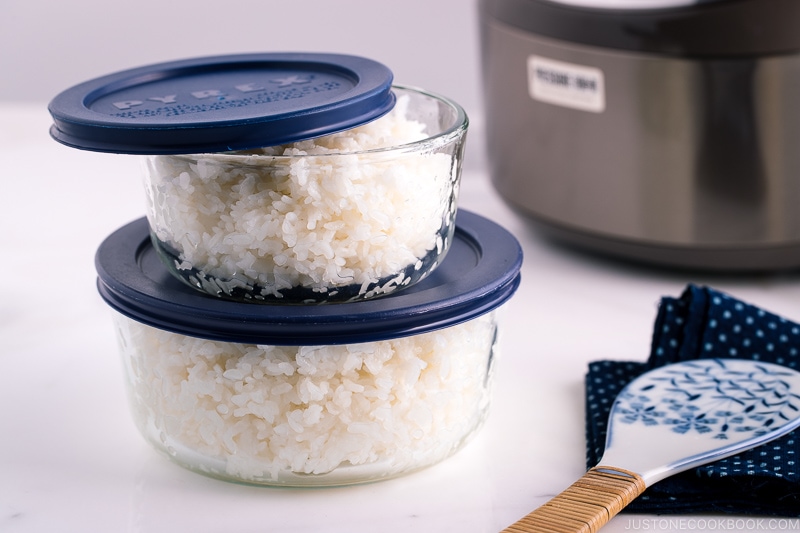
For the best results, reheat the frozen rice in a microwave. Remove the lid of the container, cover the rice with a paper towel, and microwave until hot. Transfer to a bowl, use a pair of chopsticks to fluff up the rice, and add the egg and soy sauce.
What to Serve with Tamago Kake Gohan
- Soup – Classic miso soup
- Main – Grilled fish is usually served alongside rice and miso soup for breakfast. Try this simple salted salmon alongside your TKG!
- Salad – Add a refreshing salad to your meal with this delicious sesame dressing.
- Sides – To help cleanse your palette and the richness of the egg, serve with some Japanese pickles (tsukemono). These salt-pickled tsukemono are so simple and quick to make!
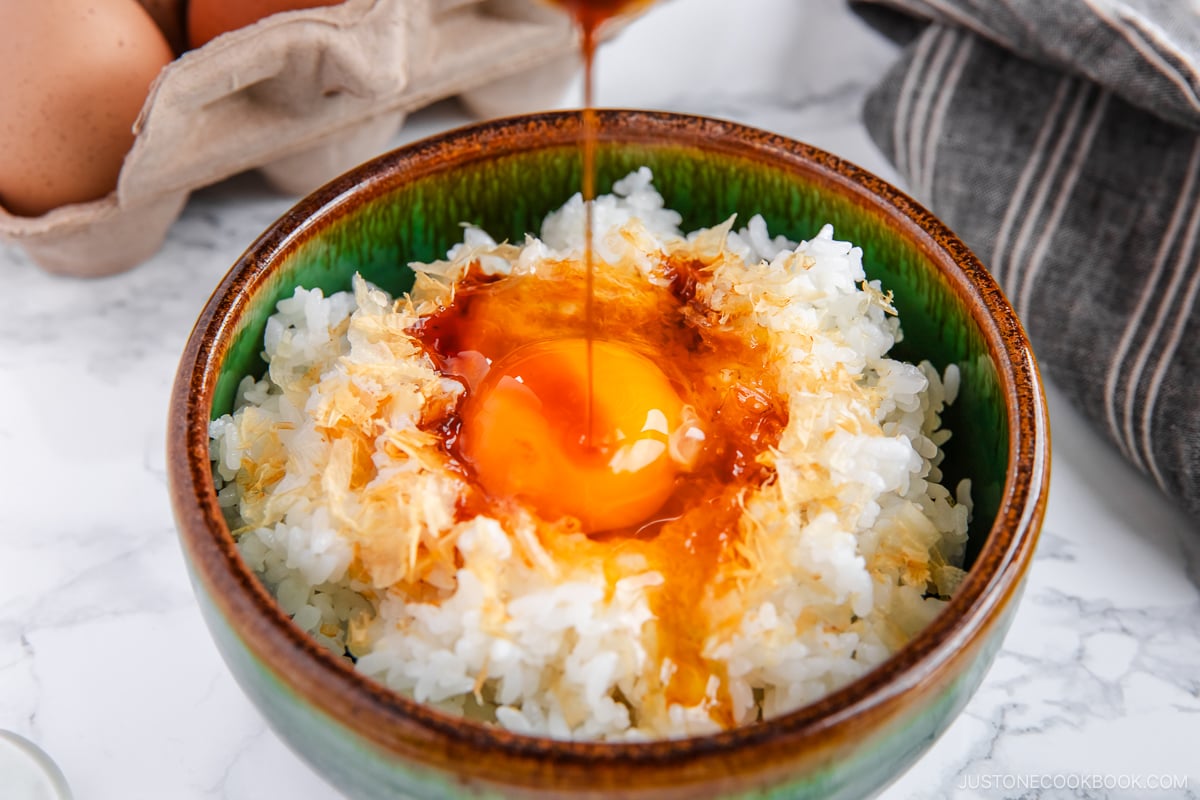
Wish to learn more about Japanese cooking? Sign up for our free newsletter to receive cooking tips & recipe updates! And stay in touch with me on Facebook, Pinterest, YouTube, and Instagram.
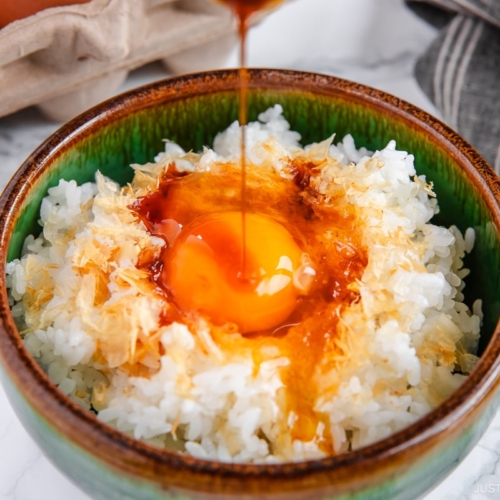
Tamago Kake Gohan (TKG)
Tamago Kake Gohan is one of Japan's most popular comfort foods for breakfast. Simply crack a raw egg over a steaming bowl of hot rice, top it with soy sauce, and enjoy the textural delight that will tantalize your taste buds.
Prep Time: 5 minutes
Total Time: 5 minutes
Ingredients
- ▢ 1 serving cooked Japanese short-grain rice (typically 1 cup, 150 g per rice bowl serving; hot and freshly steamed or reheated from frozen)
- ▢ 1 large egg (50 g each w/o shell) (fresh, free range, and locally sourced; or find pasteurized eggs at a well-stocked Japanese market; you can pasteurize eggs at home)
- ▢ soy sauce (good quality)
- ▢ toppings of your choice (I like to sprinkle dried bonito flakes called katsuobushi; furikake (rice seasoning), nori (dried seaweed), chopped green onions, and natto (fermented soybeans) are also popular)
Japanese Ingredient Substitution: If you want substitutes for Japanese condiments and ingredients, click here.
Instructions
Gather all the ingredients. For the steamed rice, ¾ cup (150 g, 1 rice cooker cup) of uncooked Japanese short-grain rice yields 2¼ US cups (330 g) of cooked white rice. See how to cook short-grain rice with a rice cooker, pot over the stove, Instant Pot, or donabe.
To a rice bowl, add 1 serving cooked Japanese short-grain rice. The rice should be steaming hot. Then, make a well in the middle of the rice. Crack 1 large egg (50 g each w/o shell) into the well.

Drizzle a small amount of soy sauce onto the egg. Now, add the toppings of your choice. I like to sprinkle katsuobushi onto the rice around the egg.

Drizzle a bit more soy sauce on the topping, if you wish. Be careful not to add too much, as the saltiness will overpower the sweetness and richness of the dish. Finally, stir the ingredients with a pair of chopsticks until the egg is fully incorporated into the rice and turns a pale yellow color. Enjoy!

Author: Namiko Chen
Course: Breakfast
Cuisine: Japanese
Keyword: egg
©JustOneCookbook.com Content and photographs are copyright protected. Sharing of this recipe is both encouraged and appreciated. Copying and/or pasting full recipes to any website or social media is strictly prohibited. Please view my photo use policy here.
Did you make this recipe?If you made this recipe, snap a pic and hashtag it #justonecookbook! We love to see your creations on Instagram @justonecookbook!
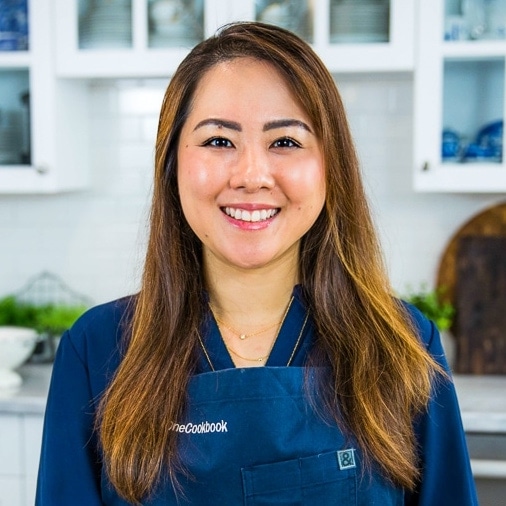
Meet the Author
Namiko Chen
I'm Nami, a Japanese home cook based in San Francisco. Have fun exploring the 1000+ classic & modern Japanese recipes I share with step-by-step photos and How-To YouTube videos.
Subscribe Now!
5 Secrets to Japanese Cooking: Simple Meals & Authentic Flavors!
Sign up to receive our FREE email series on Japanese cooking tips and weekly newsletter.

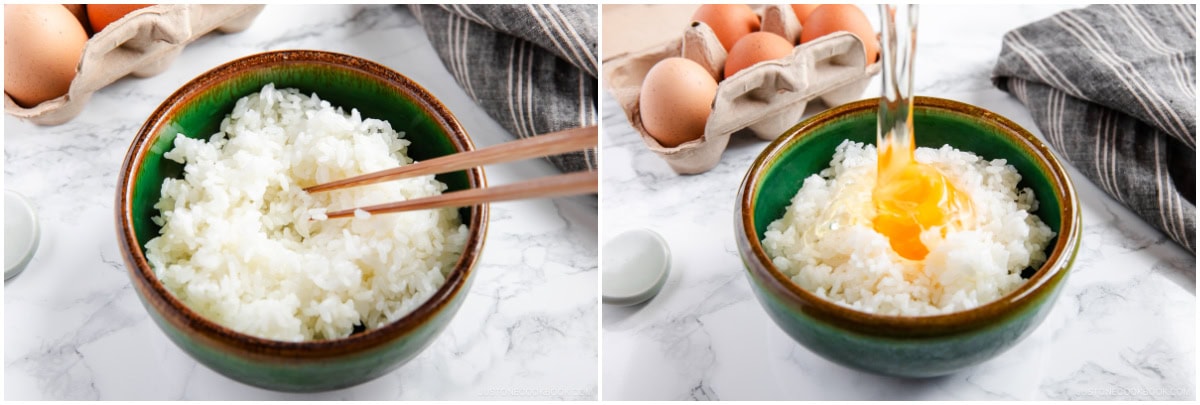
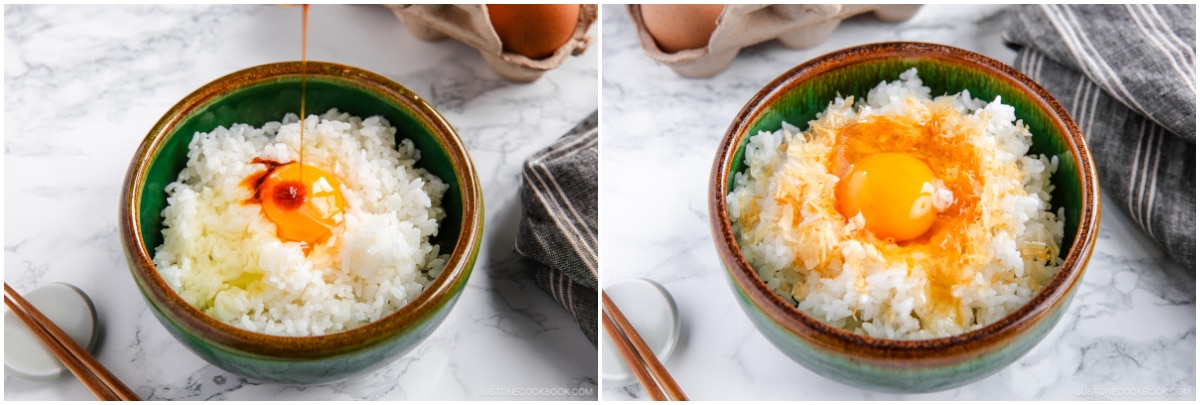
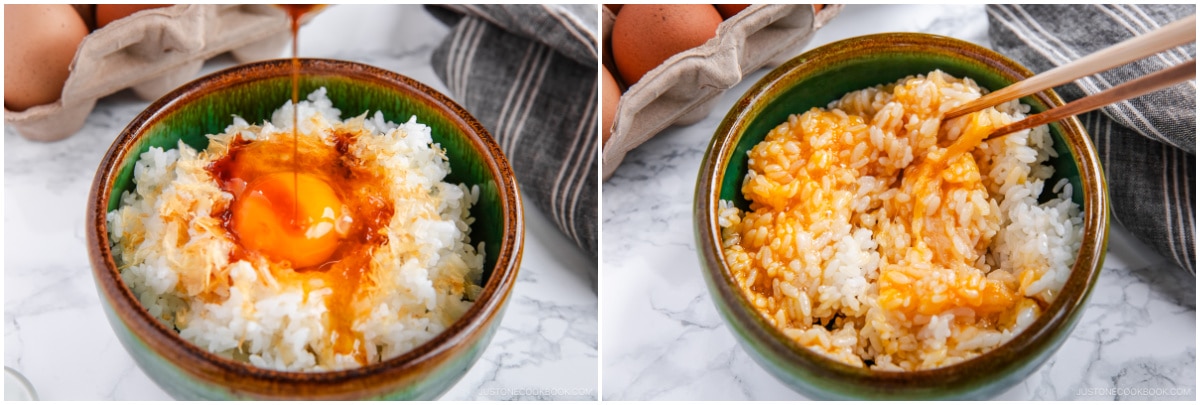




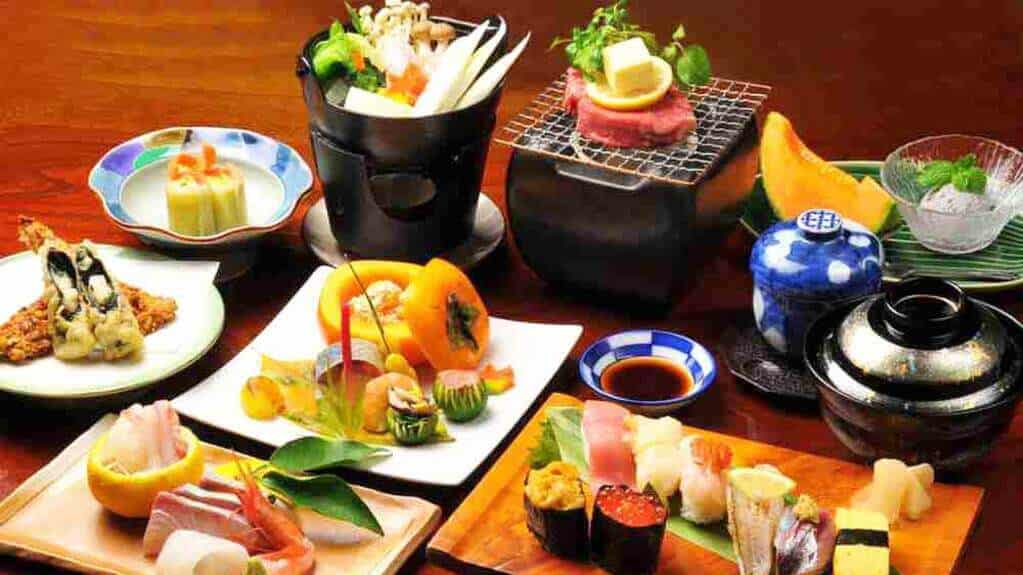





 English (US) ·
English (US) ·